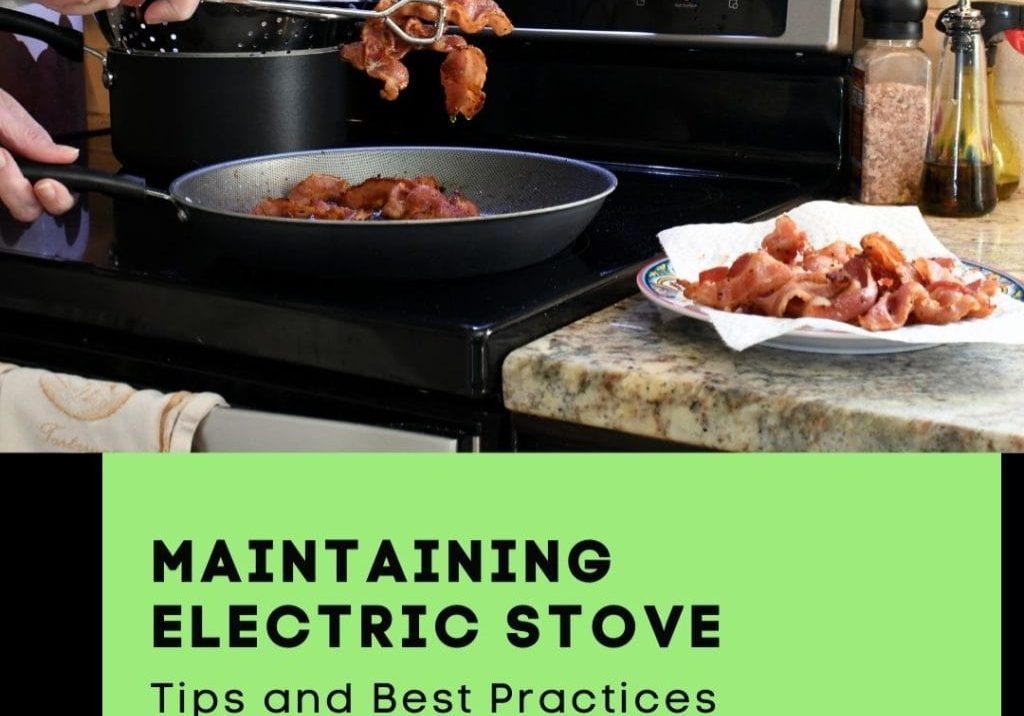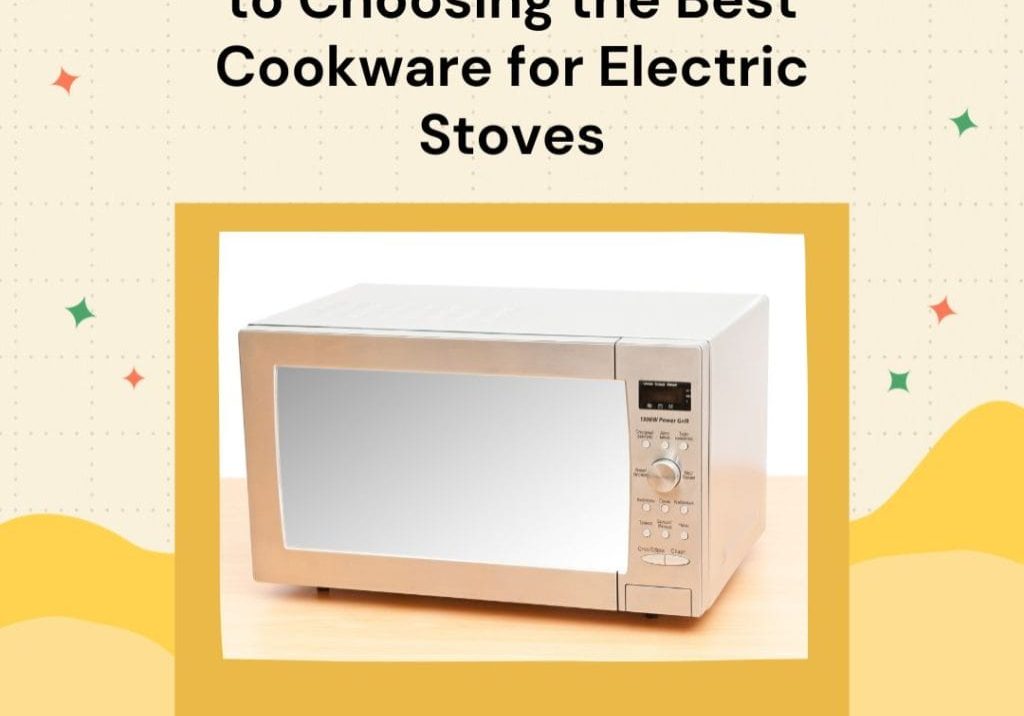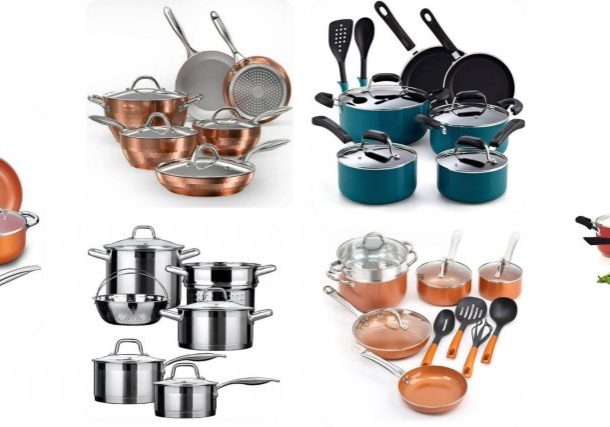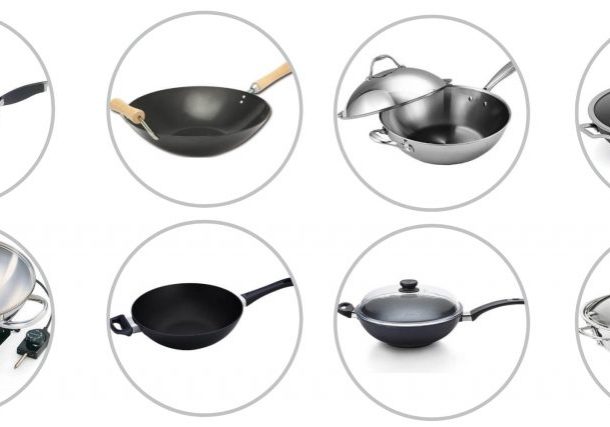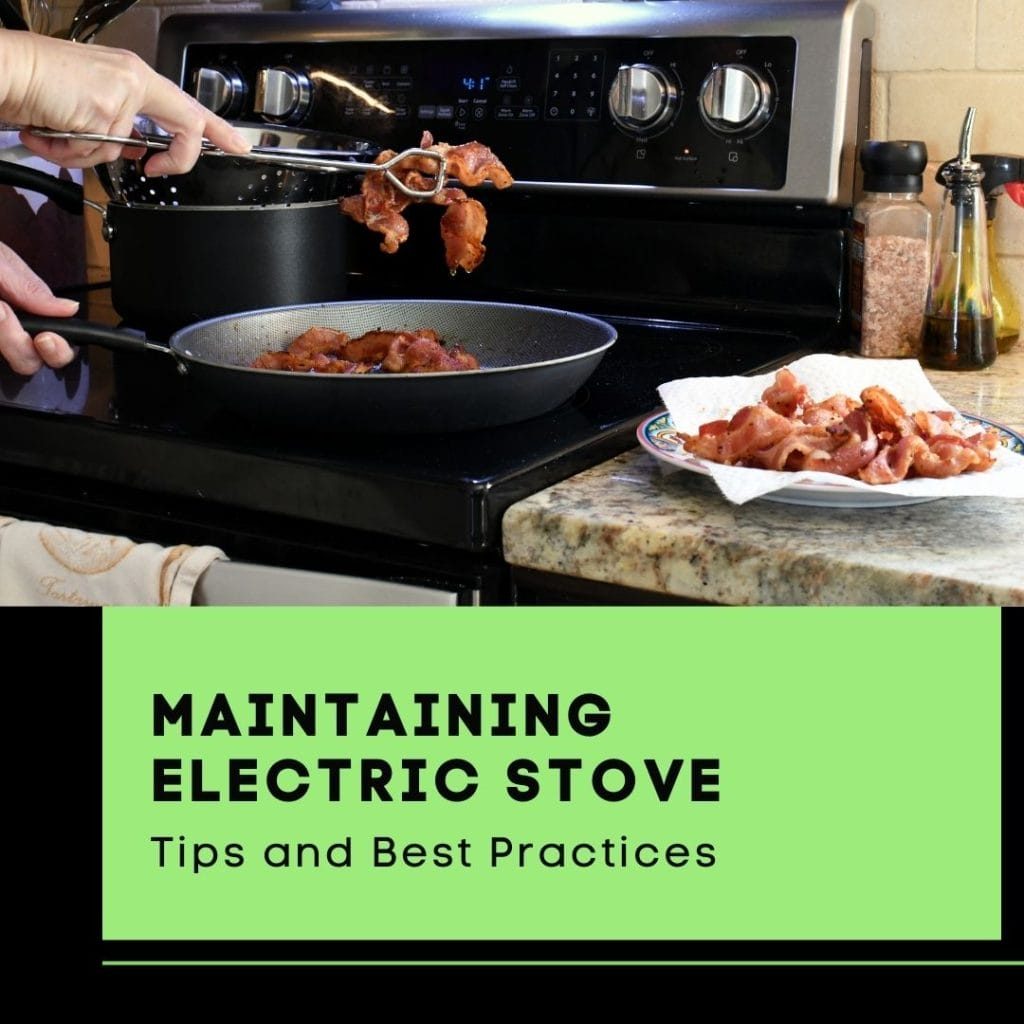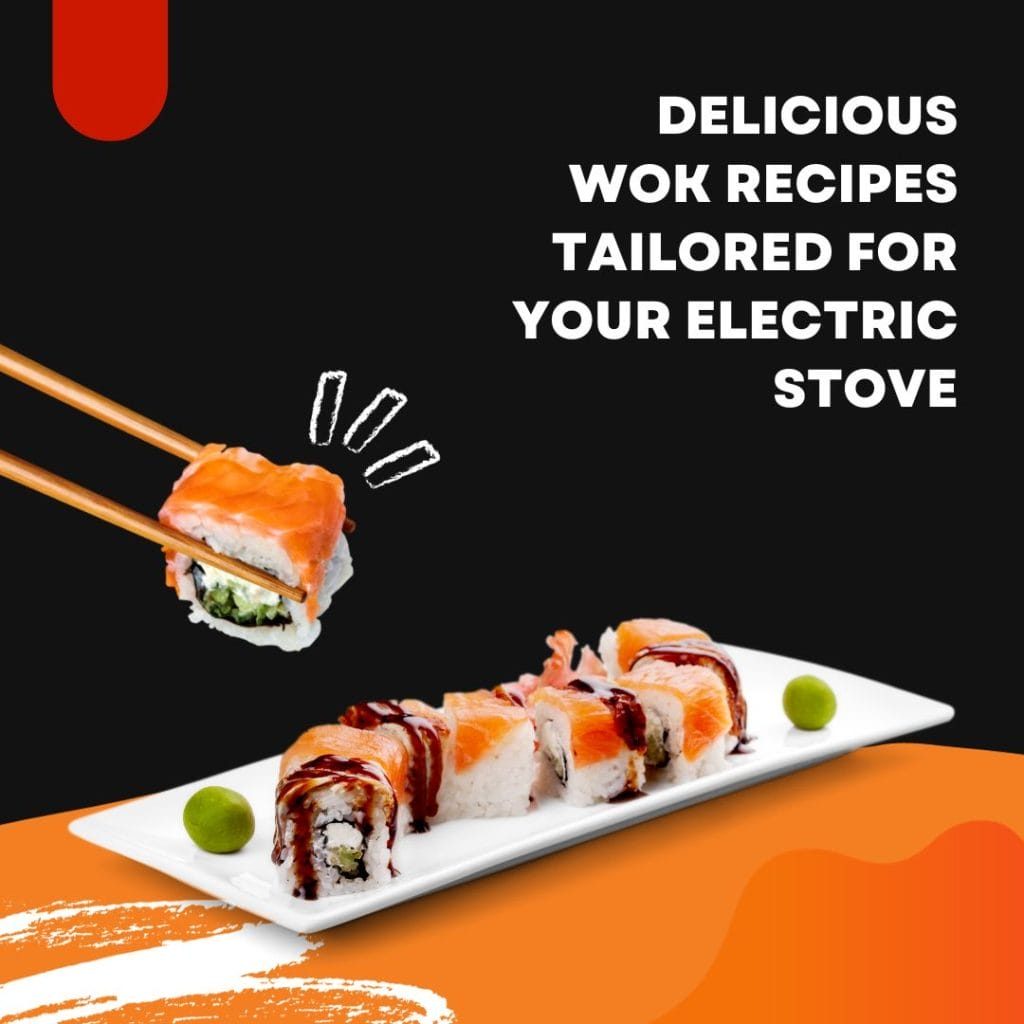In the realm of culinary arts, the evolution of cooking methods has been a testament to human ingenuity and adaptability. Among these, electric cooking has emerged as a standout, combining modern convenience with an unparalleled precision in heat control. As kitchens evolve to embrace this technology, it’s essential for home chefs and cooking enthusiasts to understand the nuances of electric cooking. From the sleek induction cooktops to the versatile electric ranges, this method of cooking is redefining our approach to meal preparation.
So, whether you’re contemplating the switch to an electric stove, looking to upgrade your electric cookware, or seeking new culinary adventures, this guide is your quintessential companion. Let’s embark on this electrifying journey into the world of electric cooking, where convenience meets culinary excellence.
Understanding Electric Cooking: Advantages and Types of Stoves
Electric cooking has revolutionized the modern kitchen, offering a blend of convenience, safety, and efficiency that is hard to match with traditional cooking methods. In this article, we’ll explore the advantages of electric cooking and delve into the different types of electric stoves and ranges available, including a comparison between induction and traditional electric stoves as well as between built-in stoves and freestanding ranges.
Advantages of Electric Cooking
1. Energy Efficiency and Cost-Effectiveness
Electric stoves are known for their energy efficiency. They convert almost all the electricity they use into heat, ensuring minimal wastage. This efficiency can translate into lower energy bills over time, making electric cooking a cost-effective choice for households.
2. Precise Temperature Control
One of the significant benefits of electric cooking is the precision it offers in temperature control. This feature is particularly advantageous when preparing delicate dishes that require consistent and accurate heat.
3. Ease of Cleaning
Electric stoves, especially smooth-top models, are easier to clean compared to their gas counterparts. Their flat surfaces can be wiped down quickly without the need to remove grates or burners.
4. Safety
With no open flame, electric stoves reduce the risk of fire hazards. Additionally, many models come with safety features like automatic shut-off and heat indicators, further enhancing safety in the kitchen.
Types of Electric Stoves and Ranges
Electric cooking appliances come in various forms, each suited to different cooking styles and kitchen layouts.
A. Induction vs. Traditional Electric Stoves
Induction Stoves
- How They Work: Induction stoves use electromagnetic fields to heat the cookware directly, rather than the cooking surface.
- Advantages: They offer rapid heating and precise temperature control. Induction stoves are also more energy-efficient and safer, as the cooktop stays relatively cool.
- Considerations: They require magnetic cookware, like cast iron or some stainless steel.
Traditional Electric Stoves
- How They Work: These stoves use electric coils or a smooth ceramic surface to generate heat.
- Advantages: They are compatible with all types of cookware and generally more affordable than induction models.
- Considerations: They take longer to heat up and cool down, and the heat distribution can be less even.
B. Built-in Stoves vs. Freestanding Ranges
Built-in Stoves
- Design: Integrated into the kitchen countertop, offering a sleek and custom look.
- Space Efficiency: Ideal for kitchens with limited space or for those seeking a minimalist design.
- Installation: Requires professional installation and often more expensive due to the custom nature.
Freestanding Ranges
- Design: These are complete units that include both the cooktop and the oven.
- Flexibility: Easy to install and can be moved if necessary, offering flexibility in kitchen design.
- Cost: Generally less expensive than built-in models and available in a variety of sizes and styles.
Essential Appliances for Electric Cooking: Elevating Your Kitchen Experience
Electric cooking has become a staple in modern kitchens, offering a blend of efficiency, safety, and precision. To fully leverage the advantages of electric cooking, it’s essential to equip your kitchen with the right appliances. This article will guide you through the must-have appliances for an electric kitchen and briefly touch upon specialized appliances, including the best woks for electric stoves.
Must-Have Appliances for an Electric Kitchen
1. Electric Stove or Range
The cornerstone of any electric kitchen is the electric stove or range. Whether you choose a traditional electric stove, an induction cooktop, or a freestanding electric range, this appliance is essential for everyday cooking.
2. Electric Oven
An electric oven provides consistent heat and is perfect for baking, roasting, and broiling. Look for models with convection settings for even cooking and energy efficiency.
3. Microwave Oven
A microwave is indispensable for its convenience. It’s perfect for reheating leftovers, defrosting, and even cooking certain dishes. Modern microwaves come with a variety of features and power settings to suit different cooking needs.
4. Electric Kettle
An electric kettle is a quick and efficient way to boil water for tea, coffee, or cooking. It’s faster than a stove-top kettle and a great energy saver.
5. Toaster/Toaster Oven
For quick breakfasts and easy snacks, a toaster or toaster oven is a must. They are perfect for toasting bread, bagels, and even for baking small batches of cookies or heating up leftovers.
6. Blender or Food Processor
These appliances are essential for making smoothies, sauces, soups, and for chopping and slicing vegetables. They save time and effort in food preparation.
7. Electric Grill or Griddle
An electric grill or griddle can be used for everything from pancakes to grilled sandwiches and even steaks, offering a convenient and smokeless way to grill indoors.
Specialized Appliances for Electric Cooking
1. Electric Pressure Cooker
Electric pressure cookers, like the Instant Pot, are versatile appliances that can cook meals faster than traditional methods. They can be used for a wide range of dishes, from stews and soups to rice and yogurt.
2. Slow Cooker
Perfect for set-it-and-forget-it meals, a slow cooker tenderizes meat and develops flavors over several hours, making it ideal for busy lifestyles.
3. Specialized Cookware for Electric Stoves
- Woks for Electric Stoves: Not all woks are suitable for electric stoves. Flat-bottomed woks are recommended as they make better contact with the stove, ensuring even heat distribution. Look for woks made of materials that conduct heat well, such as carbon steel or cast iron.
- Non-stick Skillets: Non-stick skillets are great for electric stoves, especially for cooking delicate foods like eggs or pancakes.
- Heavy-duty Pots and Pans: Choose cookware with a heavy base to ensure good contact with the cooking surface and even heat distribution.
Choosing the Right Cookware: A Guide for Electric Stoves
When it comes to cooking on an electric stove, the right cookware can make all the difference. Not only does it affect the quality of your food, but it also influences cooking efficiency and stove longevity. In this article, we’ll explore the characteristics of ideal cookware for electric stoves and provide a curated list of top picks for pots and pans to enhance your cooking experience.
Characteristics of Ideal Cookware for Electric Stoves
1. Flat Bottom
For electric stoves, particularly flat-top models, cookware with a flat bottom is essential. This ensures maximum contact with the heat source for even cooking and better energy efficiency.
2. Material
The material of the cookware significantly affects its performance. Stainless steel, cast iron, and anodized aluminum are excellent choices for electric stoves. They are durable and provide good heat distribution.
3. Thickness and Weight
Heavier cookware tends to heat more evenly than lighter pans. Thick-bottomed pots and pans prevent food from burning and ensure uniform heat distribution.
4. Size and Capacity
Choose cookware sizes that match the burner size of your electric stove. This prevents heat from being wasted and ensures that your food is cooked evenly.
5. Handle and Lid Quality
Handles should be sturdy and heat-resistant for safety and comfort. Lids should fit snugly to retain moisture and heat.
Top Picks for Pots and Pans
1. Stainless Steel Cookware Set
- Example: Cuisinart MultiClad Pro Stainless Steel 12-Piece Cookware Set
- Why It’s Great: This set offers exceptional heat distribution and durability. It’s versatile, dishwasher-safe, and suitable for various cooking methods.
2. Cast Iron Skillet
- Example: Lodge Pre-Seasoned Cast Iron Skillet
- Why It’s Great: Cast iron provides unparalleled heat retention and even cooking. This skillet is perfect for searing, frying, and baking.
3. Non-Stick Frying Pan
- Example: T-fal E76597 Ultimate Hard Anodized Nonstick Fry Pan
- Why It’s Great: Non-stick surfaces are ideal for low-fat cooking and easy cleanup. This pan is durable and offers excellent heat distribution.
4. Sauté Pan with Lid
- Example: All-Clad 4406 Stainless Steel Tri-Ply Bonded Saute Pan
- Why It’s Great: Ideal for searing, browning, and pan frying, this sauté pan has a large surface area and straight sides to contain food and liquids.
5. Stock Pot
- Example: Farberware Classic Stainless Steel 16-Quart Covered Stockpot
- Why It’s Great: Perfect for soups, stock, and boiling pasta, this stockpot offers even heat distribution and is dishwasher-safe.
6. Dutch Oven
- Example: Le Creuset Enameled Cast Iron Signature Dutch Oven
- Why It’s Great: Excellent for slow-cooking, braising, and roasting, this Dutch oven is a versatile piece with great heat retention and distribution.
7. Induction-Compatible Cookware
- Example: Duxtop Professional Stainless Steel Pots and Pans Set
- Why It’s Great: For those with induction electric stoves, this cookware set is designed for compatibility, offering fast and even heating.
Mastering Cooking Techniques and Recipes on Electric Stoves
Electric stoves have become a mainstay in modern kitchens, but cooking on them can be different from using gas stoves. Understanding how to control temperature and achieve even cooking is key to making the most of your electric stove. In this article, we’ll explore essential tips and tricks for effective temperature control and even cooking on electric stoves. Additionally, we’ll share some delightful recipes that are perfectly suited for electric stove cooking, with a special focus on wok recipes.
Tips and Tricks for Temperature Control and Even Cooking
1. Preheat Your Cookware
Electric stoves take time to heat up and cool down. Start by preheating your pots and pans for a few minutes before adding ingredients. This ensures a consistent cooking temperature from the start.
2. Use the Right Size Burners
Match your pot or pan size to the burner size. Using a small pot on a large burner can lead to uneven cooking and wasted energy.
3. Utilize Residual Heat
Since electric stoves retain heat longer, turn off the burner a few minutes before your food is fully cooked, especially for dishes that require simmering. The residual heat will finish the cooking process.
4. Adjust Settings Gradually
Electric stoves respond slower to temperature adjustments. Gradually increase or decrease the heat settings to better control the cooking temperature.
5. Flat-Bottomed Cookware for Even Heating
Use flat-bottomed pots and pans to ensure maximum contact with the burners, promoting even heat distribution.
Delicious Recipes for Electric Stoves
A. Electric Stove Wok Recipes
- Classic Stir-Fried Vegetables
- Ingredients: Assorted vegetables (bell peppers, broccoli, carrots), soy sauce, garlic, ginger, sesame oil.
- Method: Heat the wok on medium-high, add oil, and stir-fry garlic and ginger. Add vegetables and stir-fry until crisp-tender. Finish with soy sauce and a dash of sesame oil.
- Beef and Broccoli Stir-Fry
- Ingredients: Sliced beef, broccoli florets, oyster sauce, soy sauce, garlic, cornstarch.
- Method: Marinate beef in a mixture of soy sauce and cornstarch. Stir-fry beef until browned, remove, and then stir-fry broccoli. Combine with beef, add oyster sauce, and cook until sauce thickens.
B. General Electric Stove Recipes
- One-Pan Creamy Mushroom Pasta
- Ingredients: Pasta, mushrooms, cream, garlic, Parmesan cheese, chicken or vegetable broth.
- Method: In a large pan, sauté garlic and mushrooms. Add broth and bring to a boil. Add pasta and cook until al dente. Stir in cream and Parmesan cheese until a creamy sauce forms.
- Electric Skillet Pancakes
- Ingredients: Pancake batter (homemade or store-bought), butter, maple syrup, fresh berries.
- Method: Preheat the electric skillet to a medium setting. Pour batter to form pancakes. Flip when bubbles form on the surface. Serve with butter, maple syrup, and berries.
Maintenance and Care: Ensuring Longevity of Your Electric Stove
Electric stoves are a staple in modern kitchens, known for their efficiency and convenience. However, like any appliance, they require proper maintenance and care to ensure their longevity and optimal performance. In this article, we’ll explore best practices for maintaining electric stoves and provide practical tips for cleaning and upkeep that can prolong the life of these essential kitchen appliances.
Best Practices for Maintaining Electric Stoves
1. Regular Cleaning
Regular cleaning is crucial for maintaining electric stoves. Spills and food residues can cause staining and can even affect cooking performance if left unchecked. Wipe down the stove after each use with a damp cloth and mild detergent.
2. Avoid Spills and Overflows
Be vigilant while cooking to prevent spills and overflows. If spills occur, clean them up promptly to prevent them from burning onto the stove surface.
3. Use Suitable Cookware
Use flat-bottomed cookware that matches the size of the burners. This not only ensures even cooking but also prevents the risk of scratching the stove’s surface.
4. Check and Replace Elements as Needed
Over time, electric stove elements can wear out. If you notice a burner heating unevenly or not heating at all, it might be time to replace the element.
5. Avoid Heavy Cookware
Avoid using excessively heavy pots and pans, as they can strain and damage the burners, especially on glass-top stoves.
Cleaning and Upkeep Tips
1. Cleaning Burners and Drip Pans
For stoves with coil burners, regularly remove the burners and drip pans and clean them separately. Soak them in soapy water, scrub off any residue, and ensure they are completely dry before reassembling.
2. Cleaning Glass-Top Stoves
Use a cleaner specifically designed for glass-top stoves. Apply the cleaner and use a scraper designed for glass surfaces to remove any burnt-on food. Wipe clean with a soft cloth.
3. Dealing with Stubborn Stains
For stubborn stains, make a paste of baking soda and water. Apply this to the stain and let it sit for a few minutes before wiping away. For tougher stains, use a non-abrasive cleaner and a scrubbing sponge.
4. Regular Inspection
Regularly inspect your stove for any signs of wear or damage, such as cracks on a glass-top stove or fraying on electric cords.
5. Professional Servicing
Consider having your electric stove professionally serviced every few years to ensure all components are functioning correctly and safely.
Conclusion
Embracing electric cooking means appreciating the precision, safety, and energy efficiency it brings to your kitchen. Whether it’s exploring the nuances of different electric stoves, experimenting with specialized appliances like woks on electric stoves, or delving into delicious recipes tailored for electric cooking, each element of this guide has been crafted to enhance your cooking experience.
The integration of these components – appliances, cookware, techniques, and maintenance – creates a seamless and enjoyable cooking journey. As you apply these insights, you’ll discover that electric cooking is more than just a method; it’s a culinary adventure that invites creativity, efficiency, and enjoyment into your kitchen.
Remember, the heart of a great kitchen is not just in the appliances you choose but in the care, creativity, and passion you bring to every dish you prepare. So, let this guide be a stepping stone into the delightful world of electric cooking, where every meal becomes an opportunity to explore new flavors and refine your cooking skills.


